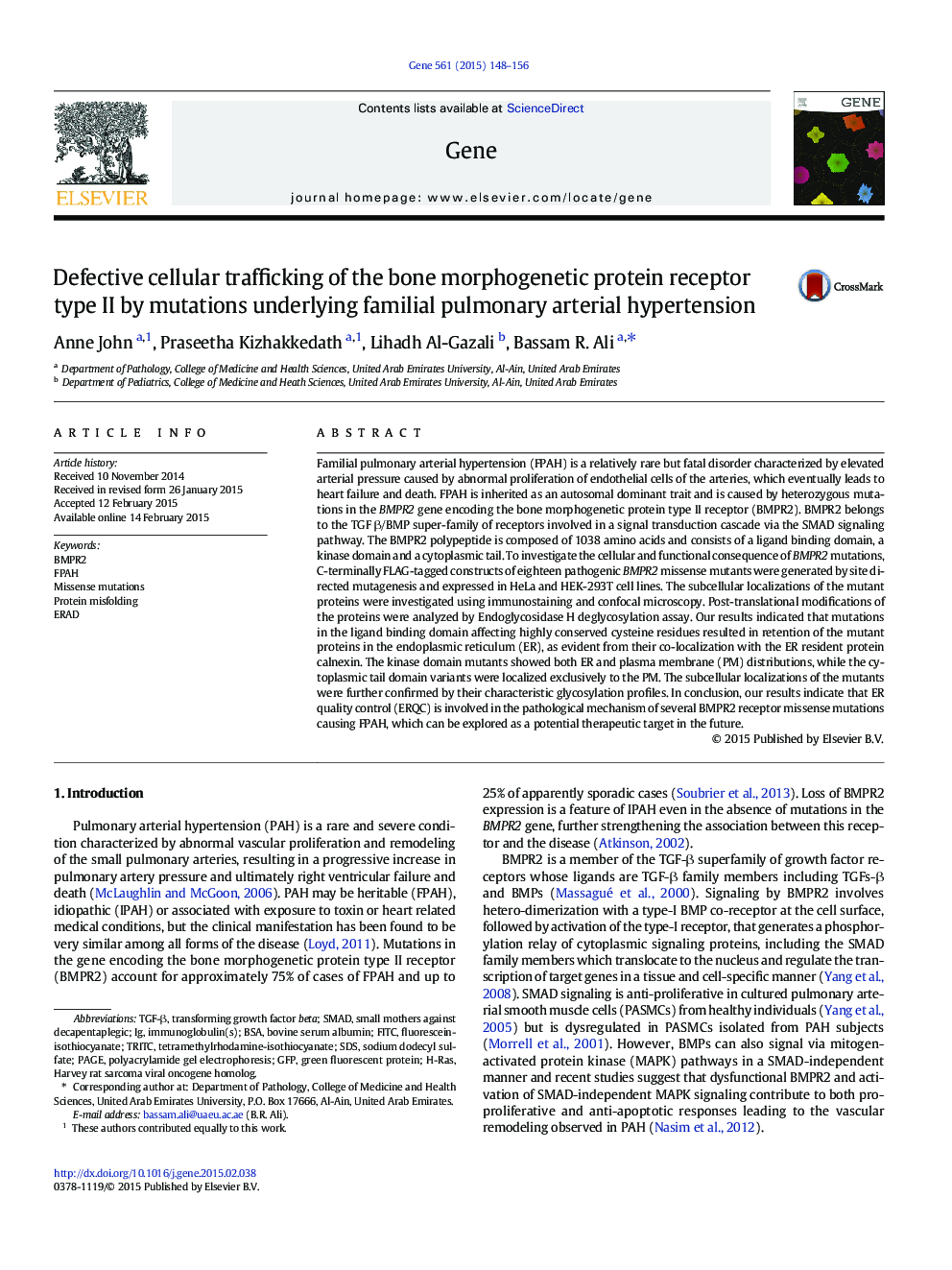| کد مقاله | کد نشریه | سال انتشار | مقاله انگلیسی | نسخه تمام متن |
|---|---|---|---|---|
| 2815845 | 1159896 | 2015 | 9 صفحه PDF | دانلود رایگان |

• FPAH is caused by heterozygous mutations in the BMPR2 gene.
• Cellular localization of FPAH-associated missense mutations in BMPR2 was analyzed.
• Cysteine substitutions lead to ER retention of the mutant BMPR2.
• Some non-cysteine substitutions also disrupt the intracellular localization of BMPR2.
• ER quality control may be involved in FPAH caused by missense mutations.
Familial pulmonary arterial hypertension (FPAH) is a relatively rare but fatal disorder characterized by elevated arterial pressure caused by abnormal proliferation of endothelial cells of the arteries, which eventually leads to heart failure and death. FPAH is inherited as an autosomal dominant trait and is caused by heterozygous mutations in the BMPR2 gene encoding the bone morphogenetic protein type II receptor (BMPR2). BMPR2 belongs to the TGF β/BMP super-family of receptors involved in a signal transduction cascade via the SMAD signaling pathway. The BMPR2 polypeptide is composed of 1038 amino acids and consists of a ligand binding domain, a kinase domain and a cytoplasmic tail. To investigate the cellular and functional consequence of BMPR2 mutations, C-terminally FLAG-tagged constructs of eighteen pathogenic BMPR2 missense mutants were generated by site directed mutagenesis and expressed in HeLa and HEK-293T cell lines. The subcellular localizations of the mutant proteins were investigated using immunostaining and confocal microscopy. Post-translational modifications of the proteins were analyzed by Endoglycosidase H deglycosylation assay. Our results indicated that mutations in the ligand binding domain affecting highly conserved cysteine residues resulted in retention of the mutant proteins in the endoplasmic reticulum (ER), as evident from their co-localization with the ER resident protein calnexin. The kinase domain mutants showed both ER and plasma membrane (PM) distributions, while the cytoplasmic tail domain variants were localized exclusively to the PM. The subcellular localizations of the mutants were further confirmed by their characteristic glycosylation profiles. In conclusion, our results indicate that ER quality control (ERQC) is involved in the pathological mechanism of several BMPR2 receptor missense mutations causing FPAH, which can be explored as a potential therapeutic target in the future.
Journal: Gene - Volume 561, Issue 1, 25 April 2015, Pages 148–156